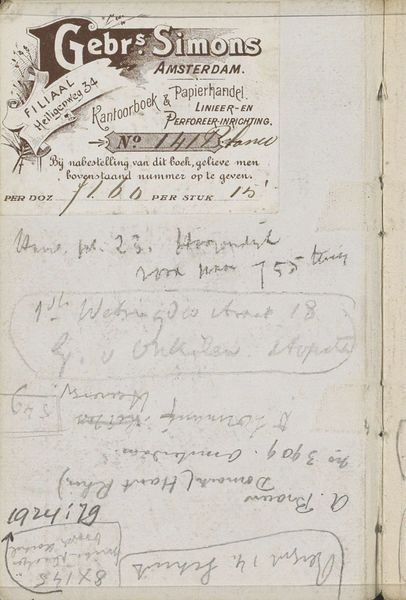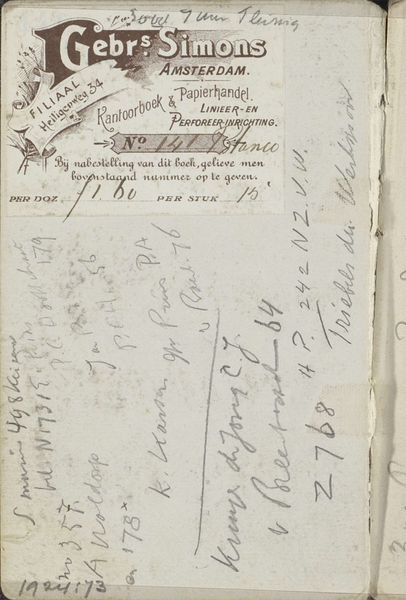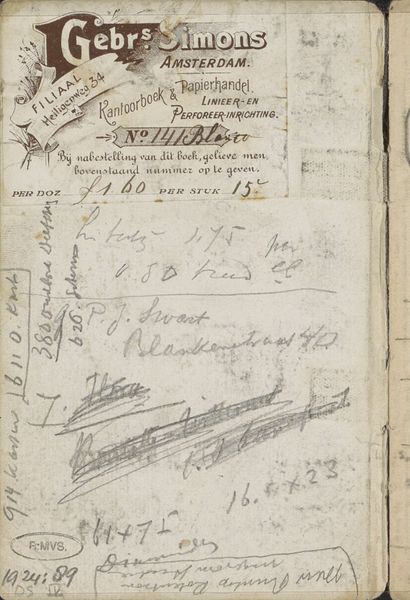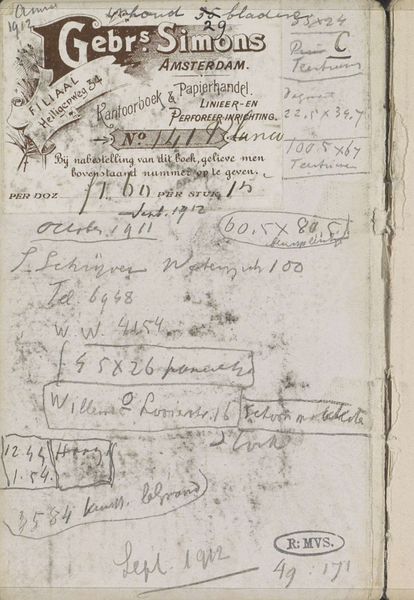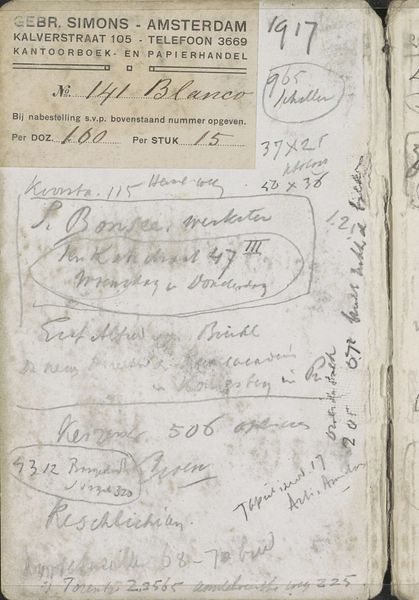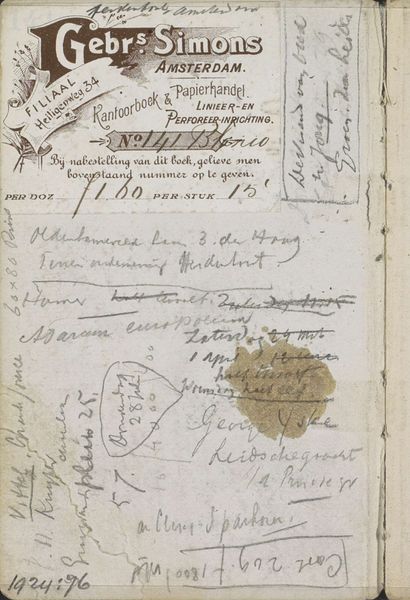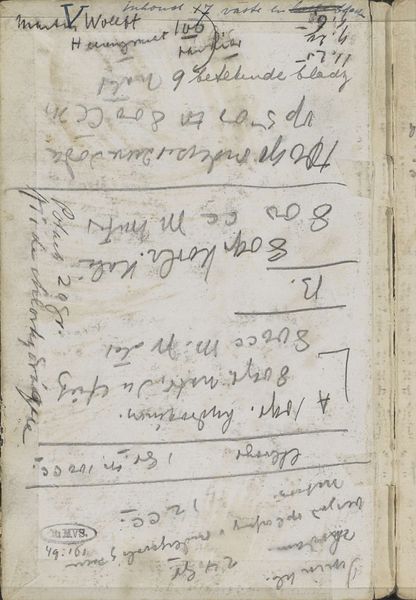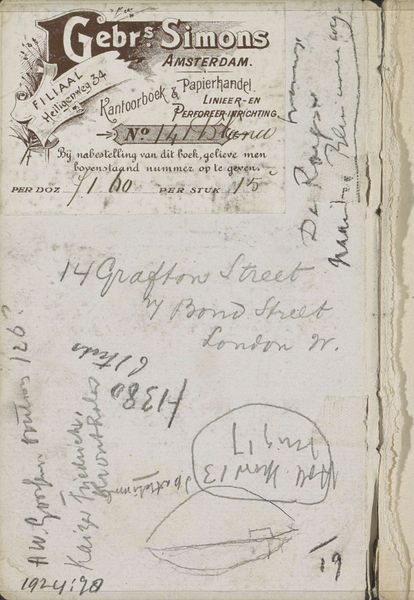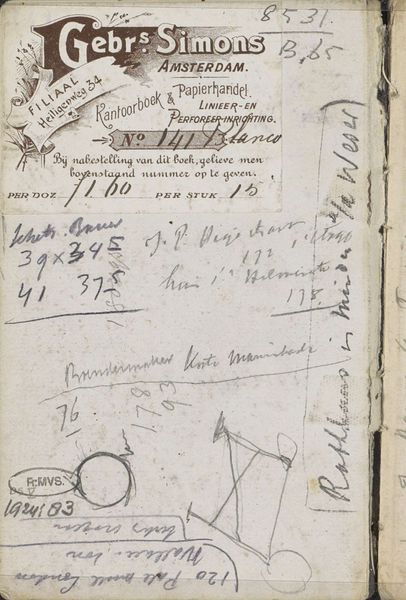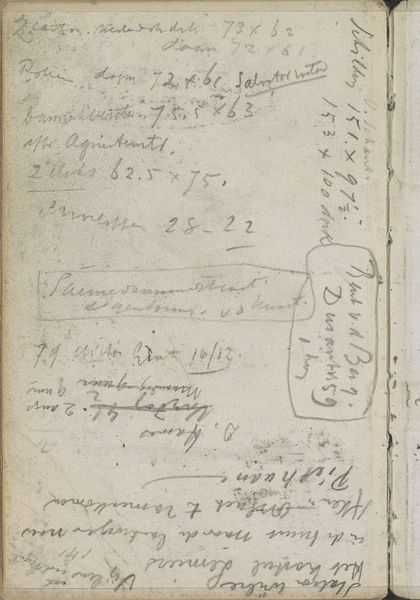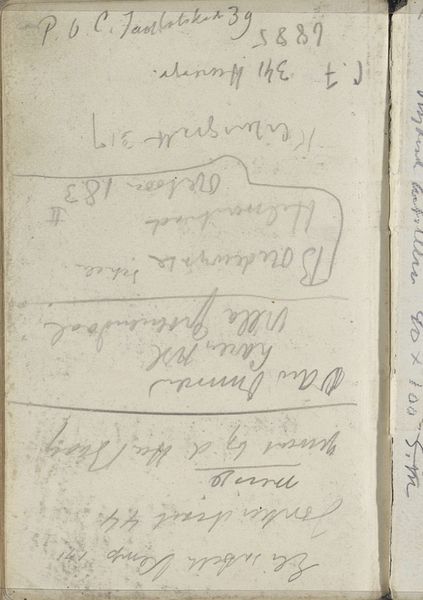
Copyright: Rijks Museum: Open Domain
Editor: Breitner's "Annotaties," dating from around 1886 to 1903 and held at the Rijksmuseum, strikes me as a very private piece, almost like a page torn from a personal journal. The chaotic handwriting and seemingly random notes give off a rather intimate and introspective vibe. How do you interpret this work beyond just a collection of annotations? Curator: I see "Annotaties" as a powerful constellation of symbols, a map of Breitner's internal landscape during a pivotal time. Notice how the different script styles clash and converge, reflecting the varied emotional states and fragmented thoughts swirling within him. The repetition of certain words or phrases perhaps indicates obsessions, unresolved issues, or maybe just everyday concerns of a bustling artist. Do you find that the mix of commercial stamps with personal handwriting creates a particular tension for you? Editor: I do. It's interesting how the Gebrs Simons stamp anchors the work to a specific time and place, yet the handwritten notes seem timeless. The contrast elevates the mundane to something more profound. Does that suggest any underlying meanings? Curator: Precisely! The commercial and the personal are constantly vying for prominence here, don’t you think? That tension itself becomes the symbolic core. It suggests the artist grappling with the external world of commerce and societal expectations and his inner world of creativity and personal reflection. What I find fascinating is how these seemingly random scribbles form a sort of coded language that speaks volumes about Breitner's anxieties, passions, and daily life, even without us knowing their direct meaning. The jumbled arrangement of words evokes the sensation of the chaotic pace of Amsterdam itself, so deeply impacting Breitner at this time. Editor: That's such a valuable perspective. I initially saw chaos, but now I appreciate the piece as a complex web of personal symbols. Thanks for unraveling this artwork! Curator: My pleasure! It's through these dialogues that we keep the symbolic language of art alive, always revealing new layers across time and culture.
Comments
No comments
Be the first to comment and join the conversation on the ultimate creative platform.

